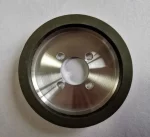Title: A Comprehensive Guide to Operating a CNC Double-Sided Grinding Machine
Introduction:
CNC double-sided grinding machines have revolutionized the manufacturing industry by providing unparalleled precision and efficiency in grinding applications. Understanding how to operate these intricate machines is essential for operators and technicians. In this article, we will provide a step-by-step guide to using a CNC double-sided grinding machine.
1. Familiarize Yourself with the Machine:
Before operating the CNC double-sided grinding machine, it is crucial to have a comprehensive understanding of its components and controls. Study the user manual provided by the manufacturer, paying close attention to safety guidelines and operational procedures.
2. Safety Precautions:
Safety should always be the top priority when working with any machinery. Ensure that you wear appropriate personal protective equipment (PPE) such as gloves, safety glasses, and ear protection. Familiarize yourself with the emergency stop buttons and other safety features on the machine.
3. Machine Setup:
Proper machine setup is crucial for optimal performance. Begin by inspecting the machine for any visible damage or anomalies. Check the coolant level and ensure that it is at the recommended level. Adjust the workpiece holders and fixtures according to the specifications of the task at hand, ensuring that they are securely fixed.
4. Material Selection:
Select the appropriate grinding wheels based on the material being processed. Different materials require different wheel specifications, including grit size, bond type, and hardness. Consult the user manual or seek expert advice if needed. Additionally, ensure that the workpiece is properly cleaned and free from debris before mounting it onto the machine.
5. Programming:
CNC double-sided grinding machines are operated using computer numerical control (CNC) programs. Use specialized software to program the machine, inputting the desired grinding parameters such as depth of cut, feed rate, and spindle speed. Verify the program for any errors or inconsistencies before proceeding.
6. Start-up and Calibration:
Before initiating the grinding process, perform a calibration to ensure that all axes are aligned correctly. This step is crucial for achieving accurate and uniform results. Follow the manufacturer’s guidelines for the calibration procedure, making any adjustments as necessary.
7. Grinding Process:
Once the machine is properly set up and calibrated, it is ready for the grinding process. Start by selecting the appropriate grinding mode based on the desired outcome (e.g., rough grinding, finish grinding, or polishing). Initiate the grinding cycle, allowing the machine to perform its operations automatically.
8. Monitoring and Maintenance:
During the grinding process, closely monitor the machine’s performance, checking for any vibrations, unusual noises, or deviations from the programmed parameters. Regularly inspect and clean the coolant system to prevent debris build-up. Perform routine maintenance tasks such as lubrication and replacing worn-out components as per the manufacturer’s recommendations.
9. Inspection and Quality Control:
After the grinding process is complete, conduct a thorough inspection of the workpieces to ensure they meet the required specifications and quality standards. Use precision measuring devices such as micrometers, gauges, or optical comparators to verify dimensions and surface finish. Record and analyze the inspection data for future reference.
Conclusion:
Operating a CNC double-sided grinding machine requires a combination of technical knowledge, attention to detail, and adherence to safety protocols. With proper training and practice, operators can unleash the full potential of these advanced machining tools, increasing productivity and achieving superior grinding results. Always remember to prioritize safety and follow the manufacturer’s guidelines for optimal performance and longevity of the machine.
.webp)
